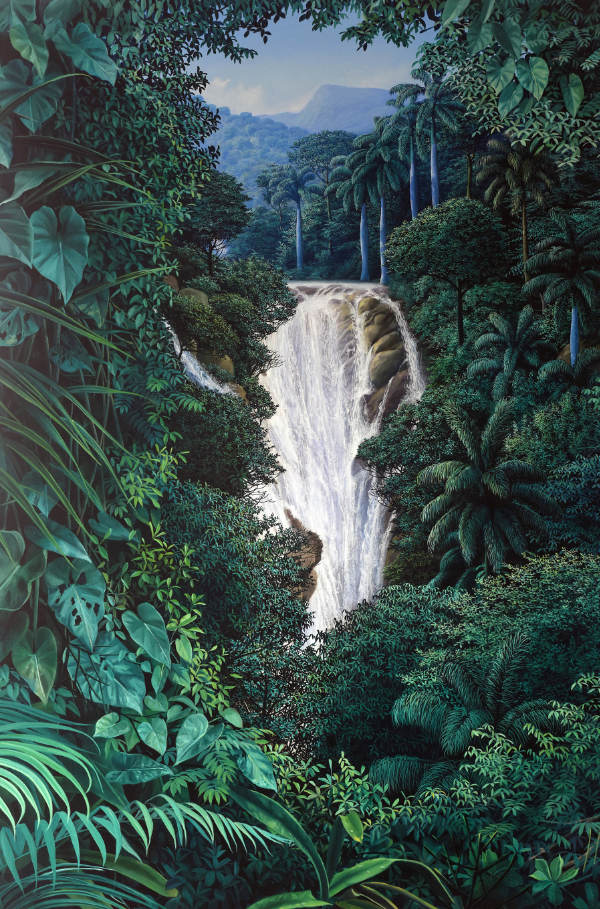Alejandro Lloret is a Cuban Brazilian painter who creates mesmerising landscapes inspired by the rainforests of Brazil. His paintings combine abstraction, neorealism, and neoromanticism to conjure landscapes that question humanity’s relationship to the environment.

Born in Yaguajay province of Sancti Spiritus, Cuba, in 1957, Alejandro grew up in a bucolic environment. His memories of his motherland have fused seamlessly with sights of the exuberant landscapes of Brazil, his home in exile for over 27 years. Along with the rich cultural, social, artistic, and linguistic influences that have surrounded him since childhood, these memories are the palette through which he expresses his profound critique of humanity’s obsessive drive to complete itself by over-exploiting and degrading the earth.
Alejandro experimented with different techniques and aesthetics before he embraced neo-hyperrealism in his well-known ‘Thinking Natures’ collection. In ‘Voices of an Absence’, a collection which expresses the same critique of humankind’s degradation of the environment, he uses metaphors (for ex. The superimpositions of humanoid silhouettes and spirals of DNA) to show the clash between destructive civilization and nature’s pre-eminence. The collection culminates in pure abstract forms whose colourful, exuberant, and chaotic compositions speak to the absence of balance in the vital but troubled relationship between human being and nature.


For Alejandro, art is a way of thinking and being, and through his fictional landscapes, he shares his thoughts on the insatiable exploitation of nature. His paintings, like poetry, are built from layers of influences and memories, pieced together by collage and montage to reinvent the forests that continue to inspire him. Alejandro’s fictional landscapes speak to viewers in the dual language of nature’s palpable finitude and effortless transcendence. To see Alejandro’s ‘Thinking Natures’ is to encounter a world that is both real and imaginary, a place which exists both as an extension of the artist’s memories and as a new and yet unknown place.
Alejandro’s fictional landscapes are subversively confrontational and moral. They anticipate and awaken nostalgia for what has been lost and what may be irreversibly damaged if the destruction of the environment continues.
Alejandro’s art is a message of love that seeks to revive in the viewer the desire to make commitments that eventually contribute to the restoration of the environment.

